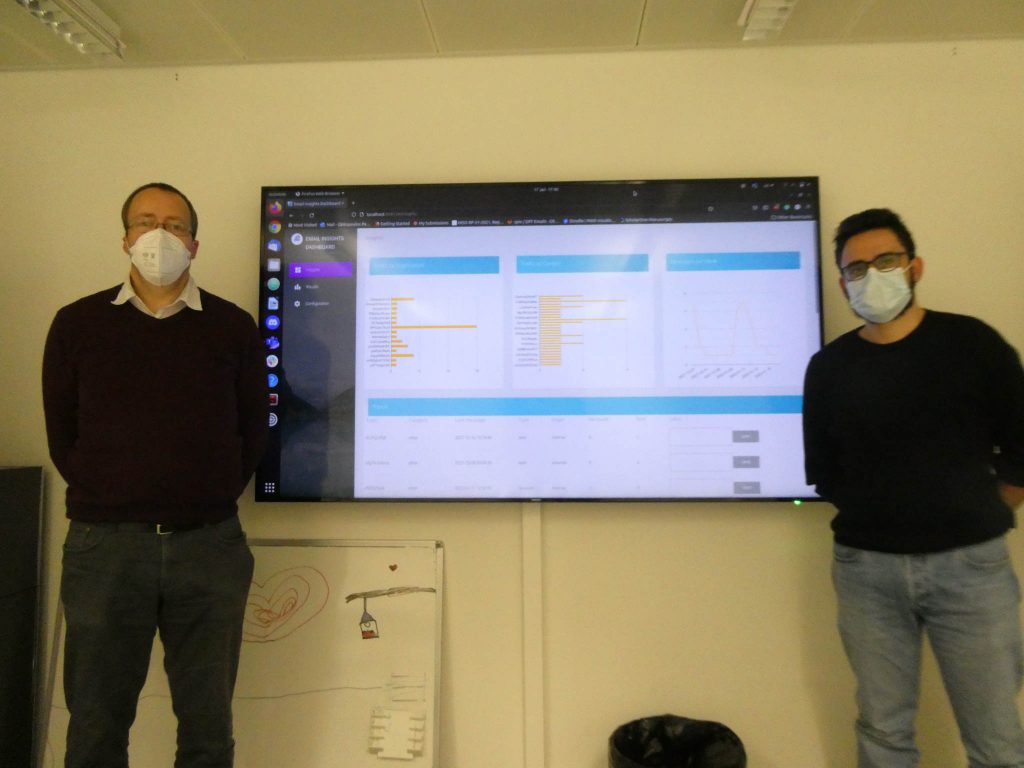Overflowing e-mail inboxes and all those red markers in Outlook may soon find a much better fate. In this guest blog post by Josef Spiller from the Focus Area Service Engineering at the ZHAW School of Engineering, he explains how he and Panagiotis Gkikopoulos worked on a smart, intelligent, convenient, and highly scalable service-oriented business software.
The amount of e-mails we as university employees need to process every day has grown tremendously. Depending on our roles, we discuss with colleagues about strategic directions and cool technologies, e-consult our students, get offers and sign contracts, review the influx of contributions to conferences we organise, and in between juggle with lots of auto-generated system emails ranging from misguided login warnings to monthly budget statistics.
Although everybody has found ways to cope, this is often based on short-term memory about the importance and urgency of certain messages. In order to prevent information overload and achieve a more systematic overview of tasks implied by e-mails, smart dashboards as new entry point to e-mail clients could be helpful.
During the second half of 2021, scientific assistant Panagiotis Gkikopoulos and principal investigator Josef Spillner have benefited from funding by the Digital Futures Fund to investigate this key question: How can we get our e-mails sorted out in the future? For this purpose, they surveyed messaging patterns and created the subject of study, EIDash, or E-Mail Insights Dashboard, as prototypical software service.
Automatically tagging e-mails with EIDash
According to the findings, e-mails refer to internal and external context information that must be considered for the extraction of insights. Internal context encompasses the persons involved as sender or receiver, the subject line, date, and threading references, among other metadata. External references result from the integration of messaging with the platforms and services surrounding the e-mail service. In a university context, those would be for instance systems to manage students and classes, but also project shares and student code repositories.
The message-level concept of EIDash is to apply rules that match on the internal context, visually represented as user-defined tags. A message might be simultaneously tagged as “student”, “spring semester 2022” and “travel”. However, tagging e-mails manually is a tedious effort. A key innovation feature of EIDash is that many tags can be created automatically by loading external context. For instance, if a lecturer teaches a class, then by querying the class management system, any e-mails sent from and to the students can be tagged as “class X”, and any student not appearing in the conversations can be highlighted as missing. This feature is supported by service-oriented information systems used throughout the university administration, and leads to interesting questions on how to design and standardise programmatic university management interfaces.
Defaulttext aus wp-youtube-lyte.php
Visualising clusters beyond the timeline
Another perspective is added by clustering messages, not only by their technically present thread identifiers, but on the semantic level – messages logically belonging together, for instance, relating to a long-running activity such as conference organisation or consortium formation for a proposal that spans many months of work. This clustering then leads to additional visualisations beyond the timeline, more focused on the key performance indicators of the activity.
Thus, the appearance-level concept of EIDash builds upon the message-level concept. Apart from generic inbox-style message lists with tags, as known from conventional mail clients, the dashboard has specific views with visual elements, such as diagrams, to relate messages and conversations. Such views can for instance show the timeline of messages related to a conference organisation, or the aforementioned mail-based interactions with a classroom.
A successful experiment
In summary, with EIDash, a first next-generation view on how we interface with e-mail messaging has been achieved, opening up a whole lot of research and governance questions even beyond the scope of a single university. Executing this project has been an exciting exercise, due to the ability to dive through the layers, from the user frontend perspective to the underlying network protocols.
Looking forward, we see value in smart, intelligent, convenient (managed) and highly scalable service-oriented business software, and support Swiss software vendors in achieving these characteristics based on the latest distributed computing paradigms. We are also looking forward to having more innovative ideas around the digital transformation proven to work out within the Digital Futures Lab.
Are you studying or working at ZHAW and interested in digital transformation? Then write an article for the DFL blog!
The Digital Futures Lab (DFL) is looking for community members (and those who might want to become one) who would like to write a blog post for the Digital Futures Lab blog. To do so, you can choose any topic that particularly interests you about digital transformation. Find out more in this blog post.

